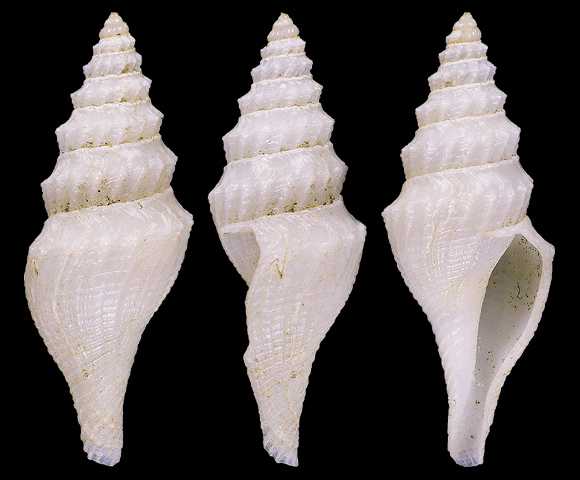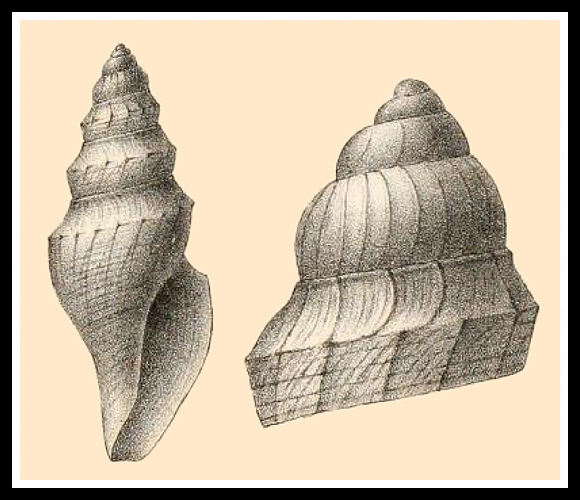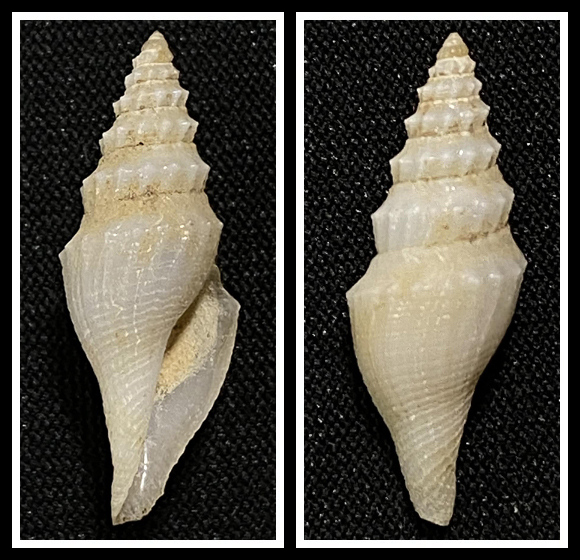
Above and below: 1400m deep, off Atlit, Haifa, NW. Israel. 17,3mm. Original pictures provided by A. Nappo (IT).
– (CC BY-NC-SA) –

« Shell. — High, narrow, biconical, fragile, translucent white, glossy, feebly ribbed and spiralled, with a stumpy subscalar spire, ending in a large, conical, sculptured, sharp-tipped dome, and with a small body-whorl, contracted base, and produced snout. Sculpture: Longitudinals — there are on the last whorl about 20 flexuous oblique threads; they rise at the suture, retreat very much in the sinus-area, but at the angulation below this they curve forward and die out on the base; the flat intervals which part them are three times their breadth; the system of longitudinal ribs on the embryonic whorls is very much like that of the shell, but is really different: the lines of growth are very fine, and are quite independent of the ribs. » – R. B. Watson: “Report on the Scaphopoda and Gasteropoda collected by H.M.S. Challenger during the years 1873-1876”, Report on the scientific results of the voyage of H.M.S. Challenger during the years 1873-76, Zoology vol. 15, Edinburgh 1886, p. 345.

« Spirals — below the sinus-area there is a blunt angulation strengthened by a row of small tubercles on the ribs. The surface is covered with very obsolete broadish threads, which are crowded on the body, but on the base are stronger, more regular, and wider apart ; on the snout they are finer and more crowded. The suture is marginated below by a flat thread. Colour almost papyraceous white. Spire is subscalar, narrow, and would be high but for the abruptness with which it is crowned by the apex, consisting of four yellow conically globose whorls, of which the last is large and dome-shaped, and the first minute, prominent, but at the very tip slightly bent down ; the first two are smooth ; the last two are sparsely crossed by minute cusp-like threads or riblets. » – Ibid.
Above: the species in R. B. Watson, plate XXIII fig.6.

Original pictures provided by I. Mulero (ES).
– (CC BY-NC-SA) –